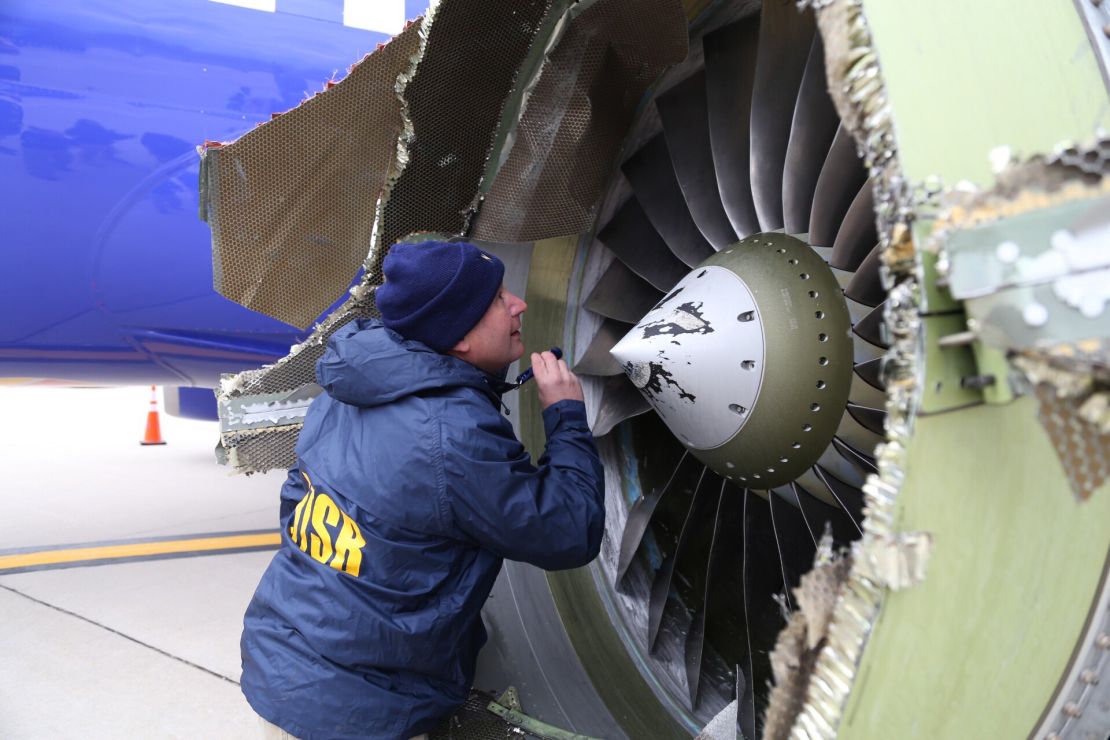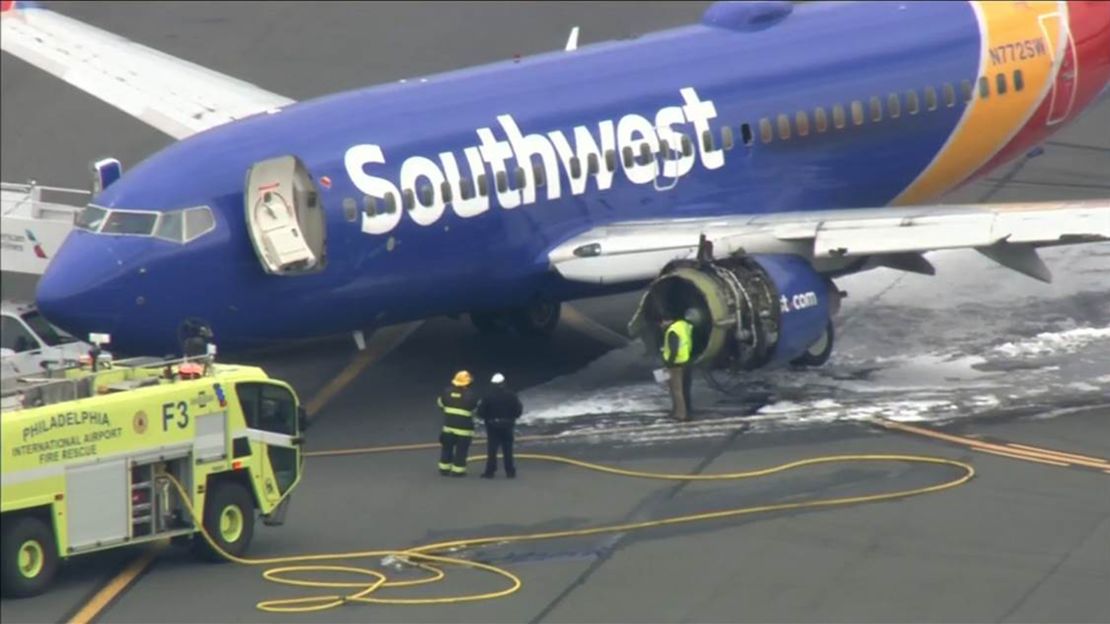Investigators don’t yet know what caused the engine failure that forced Southwest Airlines Flight 1380 to an emergency landing in Philadelphia on Tuesday, but it has similarities to an incident with the same airline in 2016.
Both involved an engine fan blade that had detached. And in both cases, the National Transportation Safety Board says, there appear to be signs of metal fatigue at the detachment point.
“In aviation, there should be inspection techniques and procedures in place to detect something like (metal fatigue),” NTSB Chairman Robert Sumwalt said Wednesday.
“What we want to find out is why was this not detected ahead of time.”
Tuesday’s deadly incident
On Tuesday morning, Southwest Flight 1380 departed New York for Dallas with 149 people aboard. But about 20 minutes in, what sounded like explosions boomed from the plane’s left side, starting a sequence that ended with one woman dead, seven people injured and an emergency landing at Philadelphia International Airport.

Something in the engine broke apart midair and burst through the Boeing 737-700’s window, passengers said. The shattered window partially sucked a woman out of the plane as passengers struggled to pull her back in.
Although a man eventually pulled her back in and someone tried to revive her, the woman died of her injuries.
A preliminary look at the damaged CFM International 56-7B turbofan engine revealed one of 24 fan blades was missing, Sumwalt told reporters Tuesday.
The engine’s cowling was found about 70 miles from where the plane landed, Sumwalt said.

Sumwalt said there was evidence of metal fatigue where the blade attached to a hub.
Similar conditions were reported in 2016, when an engine failed on a different Southwest flight.
The 2016 incident
In August 2016, Southwest Airlines Flight 3472, a Boeing 737-700 flying from New Orleans to Orlando, was forced to make an emergency landing in Pensacola, Florida, when an engine failed.
No one was injured, Southwest said.
Debris from the engine’s inlet damaged the plane’s fuselage and wing, but the passengers’ interior compartment wasn’t penetrated, according to the NTSB’s initial findings, published in September 2016.
One of the engine’s fan blades had separated from the fan disk, the NTSB said – similar to what appears to have happened on Tuesday.
Also similar to Tuesday’s incident, there were signs of metal fatigue, the board said.
“The fracture surface of the missing blade showed curving crack arrest lines consistent with fatigue crack growth,” the NTSB said in a news release about the 2016 incident.
The NTSB’s release didn’t name the precise engine model in the 2016 incident, but the board named CFM International, the manufacturer of the engine that failed Tuesday, as being a subject of the investigation.
Southwest didn’t immediately respond Wednesday to a question about the engine model in the 2016 incident.
FAA proposed ultrasonic inspections of engine blades
In August 2017, the Federal Aviation Administration proposed a rule that would require airlines to use ultrasound to inspect fan blades of certain CFM56-7B engines.
That proposal cited an unspecified flight in which a fan blade failed and an inlet separated.
The FAA said Wednesday evening it will issue a directive within two weeks requiring inspections of certain CFM56-7B engines.
The directive will require an ultrasonic inspection of fan blades when they reach a certain number of takeoffs and landings.
It’s not clear whether the rule, were it in effect, would have applied to the failed engine in Tuesday’s flight, because there are many CFM56-7B variants.
“There are various iterations of that (engine) and so I can’t say exactly what that airworthiness directive might have applied to at this point, but that will be part of our investigation,” Sumwalt said.
Southwest, meanwhile, said Tuesday that it is “accelerating its existing engine inspection program relating to the CFM56 engine family.”
“The accelerated checks are ultrasonic inspections of fan blades of the CFM56 engines,” Southwest’s statement reads.
A Southwest spokesperson said in an email that the plane’s engine had undergone a visual inspection just two days before failure.
On Sunday workers had looked at the inlet, exhaust, cowlings, and fairings, Southwest said.
“The next scheduled blade lube, and the first ultrasonic inspection on the No. 1 engine of aircraft 772, was scheduled to be accomplished in December of this year,” Southwest said.
The engine had 40,000 cycles on it, a quarter of those since it was overhauled, the airline said.
CNN’s Thom Patterson, Eliott C. McLaughlin, Gregory Wallace, Brian Todd, Julia Jones and Aaron Cooper contributed to this report.











